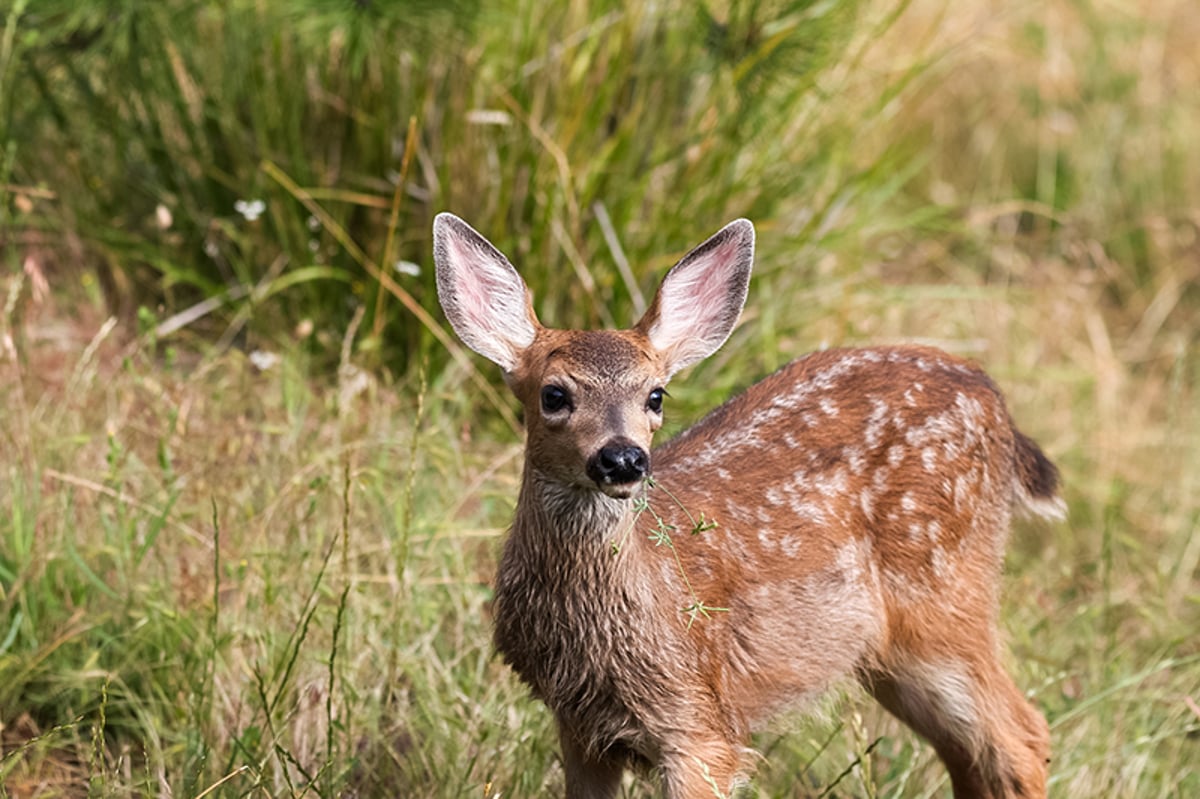Deer Can Shed Coronavirus for 5 Days After Infection

MONDAY, March 28, 2022 (HealthDay News) -- White-tailed deer can shed and transmit the COVID-19 virus for up to five days after they're infected, according to a study that also identified where the virus develops and replicates in deer.
Five days is "a relatively short window of time in which the infected animals are shedding and are able to transmit the virus," said co-author Dr. Diego Diel, director of the Cornell University Virology Laboratory in Ithaca, N.Y.
For the study, Diel and his team analyzed data from 2021 surveys of five U.S. states. Their findings were recently published in the journal PLOS Pathogens.
The researchers also found that the virus develops and replicates in the deer's respiratory tract, lymphoid tissues (including tonsils and several lymph nodes) and in the central nervous system.
"Virus replication in the upper respiratory tract — especially the nasal turbinates [nose structures] — is comparable with what is observed in humans and in other animals that are susceptible to the infection, and I think that's probably one of the reasons why the virus transmits so efficiently," Diel said in a university news release.
As with humans, the virus spreads between deer through nasal and oral secretions and aerosols, he said.
The findings add to ongoing research investigating whether deer are reservoirs of SARS-CoV-2 in nature. Last year, scientists identified a number of cases in which the virus was transmitted from people into deer in several states.
And more recent research reported that the spread of a virus from animals to people and back again is not unique to COVID-19 and has occurred at least 100 times.
Pinpointing tissues in deer where the virus replicates during infection could be important for hunters, according to Diel's team.
There is no evidence yet that people have caught COVID-19 from deer, but some experts are concerned hunters could get the virus from infected deer.
"Given the broad practice of deer hunting in the U.S., knowing the sites of virus replication is important to minimize the risks of exposure and transmission from these wild animals that could potentially transmit the virus back to humans," Diel said.
More information
The U.S. Centers for Disease Control and Prevention has more on animals and COVID-19.
SOURCE: Cornell University, news release, March 22, 2022
Related Posts
Foods High in Added Sugars Might Raise Your Odds for Kidney Stones
FRIDAY, Aug. 4, 2023 (HealthDay News) -- There is a long list of reasons to...
Coping Strategies Linked to Distress, QOL in Caregivers of Stem Cell Recipients
TUESDAY, Nov. 29, 2022 (HealthDay News) -- For caregivers of patients with...
Squeaky or Furry: New Insights Into Dogs’ Love of Toys
MONDAY, June 20, 2022 (HealthDay News) -- What goes through your dog's mind when...
Las infecciones con el VIH siguen en declive entre los jóvenes de EE. UU.
MARTES, 23 de mayo de 2023 (HealthDay News) -- La cantidad de infecciones con el...
